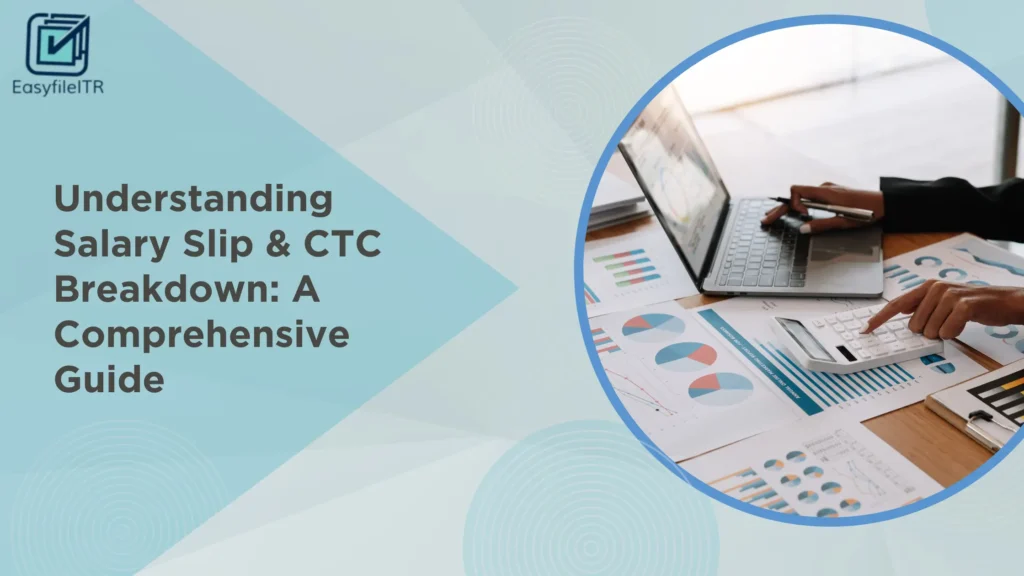
It is very important to know how your salary is built when looking for work today. Cost to Company (CTC) is a very important aspect when breaking down a salary. It lets employers and employees see how much has been put into an individual’s training. Many people tend to be confused when they look at their wage statement. If you want to know about CTC, how your salary is worked out or what cuts will be taken from your pay, this blog will explain things for you.
What is the meaning of CTC?
Cost to Company (CTC) represents all the money a company pays to an employee over a year. It consists of your basic pay along with benefits, additional pay and employer contributions. For some, it can feel confusing that CTC has a direct side and also indirect contributions. CTC may tell you the total amount you’re entitled to by the company, but you should understand how much of this money you actually get to keep.
Here’s What’s Included in a CTC Breakdown:
The fixed amount you earn each month, before allowances, bonuses, taxes or benefits are added or deducted, is called your basic salary.
- HRA: Money from your salary to help you pay for housing.
- Special Allowance: A way to pay for other extra expenses when needed.
- Additional income is earned if your job performance meets certain requirements.
- The company pays a percentage of your wages into your Provident Fund and Employee State Insurance Corporation.
A gratuity is a single payment made to an employee who has worked for the company for a long time, presented when the employee departs.
All the costs above are totaled to give you the CTC value that represents the expense the company will have for you in a year.
What Does the Term Gross Salary Cover?
Your gross salary is the full salary that you get before any pay is taken out. It comprises salary, funds for rent or house, bonuses, special benefits and any other payment types. You should remember that the employer’s portion for Provident Fund (PF), Employee State Insurance (ESI) and Gratuity is not considered part of your gross salary. You and your employer can calculate them separately, with your employer’s contribution put towards your future income and healthcare.
A breakdown of gross salary components is available here
- Your foundation of income is the basic salary. This number is set aside by the government every month, forming the groundwork for every allowance and deduction you get.
- HRA: The amount your employer provides for your housing expenses.
- Special Allowances: Certain costs related to work such as for travel or education, are sometimes given to employees based on career and firm rules.
- Bonuses/Incentives usually come when you meet personal or company goals.
Gross salary should not be confused with the actual amount you deposit in your bank account after taxes.
What does Net Salary (Take Home Salary) mean?
Net salary means the amount you can use from your account once contributions and taxes have been deducted from your bigger, gross salary. The items deducted are Provident Fund (PF), Employee State Insurance (ESI), Tax Deducted at Source (TDS), Professional Tax (PT) and insurance policy premiums.
How to Calculate Net Salary
Net Salary = Gross Salary – Deductions
The purpose of these deductions is tax liabilities, as well as compulsory payments (such as PF and ESI) and company expenses (such as professional tax or insurance premiums).
Now, let’s look more closely at what goes into calculating net salary.
An important aspect to remember: deductions
1.Contribution Towards Employee PF is 12% of their monthly Fixed Salary
PF is an arrangement that allows you to save money for a long period. The employee puts in 12% of their basic salary toward their PF and the company covers the other 12% as well. The funds in your PF account earn interest and are available once you retire or move jobs. From your basic salary, 12% is automatically removed, making this one of the main deductions you’ll see.
2.Employee contributions to social insurance are 0.75%
Workers in India give 0.75 percent of their earnings every month to support the Employee State Insurance (ESI). The fund exists to help employees and their family members access medical and health insurance benefits.
3.Tax Deducted by the Company Deducts from the Salary of its Staff
The employer deducts TDS from your salary according to the tax slab you are under in India. The deductions you make are sent to the government. You won’t have to write a single large check when you file your taxes because your tax payments are made throughout the year.
4.Professional Tax (PT)
Professional tax is imposed by the state government. The amount is determined by each state, typically taking into account the slab your salary fits into. Employers in some states must deduct professional tax from employees’ salaries and send the amount to the government.
Things to Note When It Comes to Tax Deductions
As per the Provident Fund scheme, your Employee PF is 12% of your Basic Salary.
- According to the Employee State Insurance Corporation, each employee must pay 0.75% (Employee ESIC).
- TDS: Taking out tax depending on what income slab applies to you.
- Professional Tax: Tax rate depends on where in the country you live.
By using these deductions, staff are saving for future expenses, covered by health insurance and paying all their taxes. They may take part of your monthly pay, but they help build stability in your financial future.
How Are These Components Showing Up on the Salary Slip
It is a document provided by an employer to its staff that explains the employee’s salary. It separates the salary into main categories: gross salary, tax and benefit deductions and net salary. With a salary slip, employees understand how their wages are figured and which deductions are included. Every month, employees must look over this document to check that the pay they get is accurately calculated and their deductions are correct.
What is on a Salary Slip:
- Name, designation and employee code are essential details about employees.
- You will receive basic salary, HRA, some special allowances and bonuses.
- Employers must contribute a portion of the PF, ESIC and gratuity each month.
- Deductions from your pay include PF for employees, ESIC for employees, TDS, professional tax and insurance premiums.
- The cash amount sent to your account is your net salary.
In short, understanding your money matters is very important
Understanding both your salary total and the CTC on your payslips allows you to handle your finances correctly and keep everything clear between the employee and employer. It tells you your pay, what is taken out for taxes and the amount you bring in when it’s all said and done. Making sure you understand what goes into your salary allows you to decide on savings, taxes and how to invest wisely.
Whatever your work experience, knowing the details of salary structure allows you to handle your earnings well and reach your long-term financial objectives.
Frequently Asked Questions About Salary Slips & CTC
What is a salary slip?
A salary slip, also known as a payslip, is a monthly document provided by an employer that details an employee’s earnings, deductions, and net take-home salary.
What does CTC mean?
CTC stands for Cost to Company. It is the total amount a company spends on an employee in a year, including basic salary, benefits, bonuses, and other perks.
What is the difference between gross salary and net salary?
Gross Salary is your salary before deductions (like tax, PF).
Net Salary is your take-home pay after all deductions.
What is the role of allowances in a salary slip?
Allowances (like HRA, travel, medical) are added to the basic salary to cover specific expenses and often have tax benefits.

